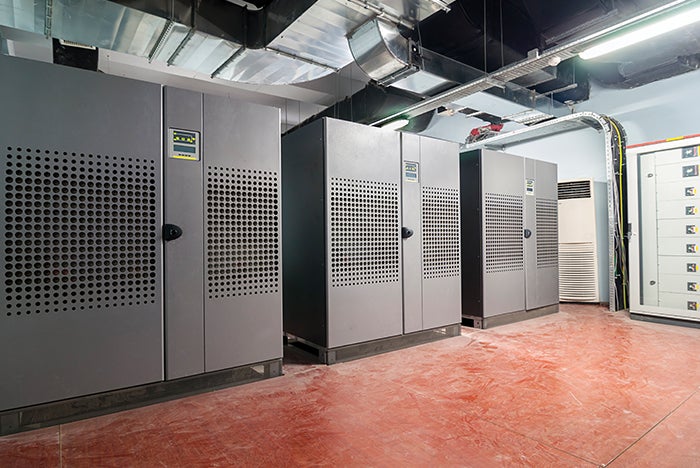Resilience for health care technology

Many facilities are being constructed or upgraded with more power conditioning equipment such as uninterruptible power supplies.
Image by Getty Images
The are several operating definitions for the new watchword, “resilience.” Perhaps the one most applicable to the accompanying article is the ability to withstand or recover quickly from difficult conditions.
Some facilitywide examples of these difficult conditions are discussed in the Department of Health and Human Services’ (HHS’s) Sustainable and Climate Resilient Health Care Facilities Initiative (SCRHCFI) and SCRHCFI Best Practices Guide Toolkit for Vulnerability Assessments.
The health care field recognizes that much or perhaps all of the high-technology equipment discussed within the accompanying article requires both reliable and resilient power delivery and reliable and resilient network connectivity.
The recent American Society for Health Care Engineering monograph entitled “Roadmap to Resiliency,” discusses many hospital failures in detail and identifies common issues such as failures of parts, maintaining emergency power equipment without disabling the system, the need for keeping water out of both equipment spaces and wiring, and the importance of remote equipment monitoring and notifications.
Another HHS publication, the 2014 Primary Protection: Enhancing Health Care Resilience for a Changing Climate, discusses critical infrastructures including assets, systems and networks, both physical and virtual — including information systems.
It states, among many other important issues, “The emergency power supply system is probably the most critical element of a health care system. Together with fuel supply and storage facilities, this system enables all the other hospital installations and equipment that have not sustained direct physical damage to function normally in any disaster. As the nature of diagnosis and treatment becomes more dependent on computers, monitors, and other electrical equipment, the need for emergency power will continue to grow.”
These are the bases for projecting an increase in emergency power usage moving forward as broadly distributed high-technology components become more pervasive and, yes, more critical to patient care.





